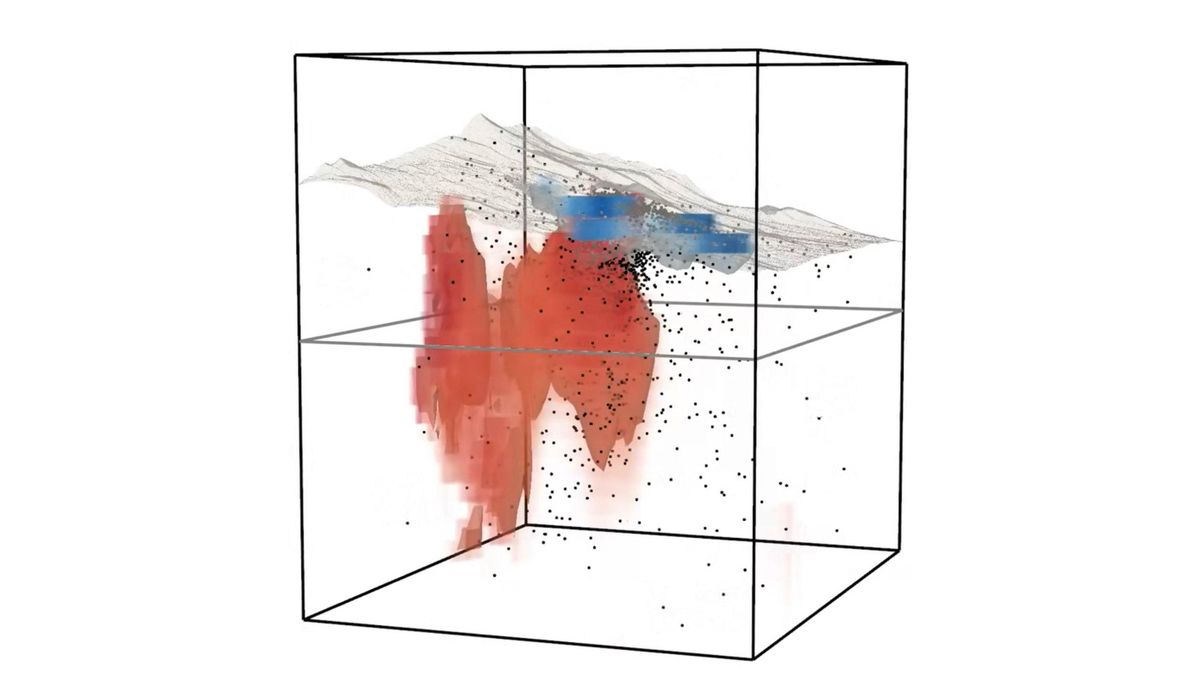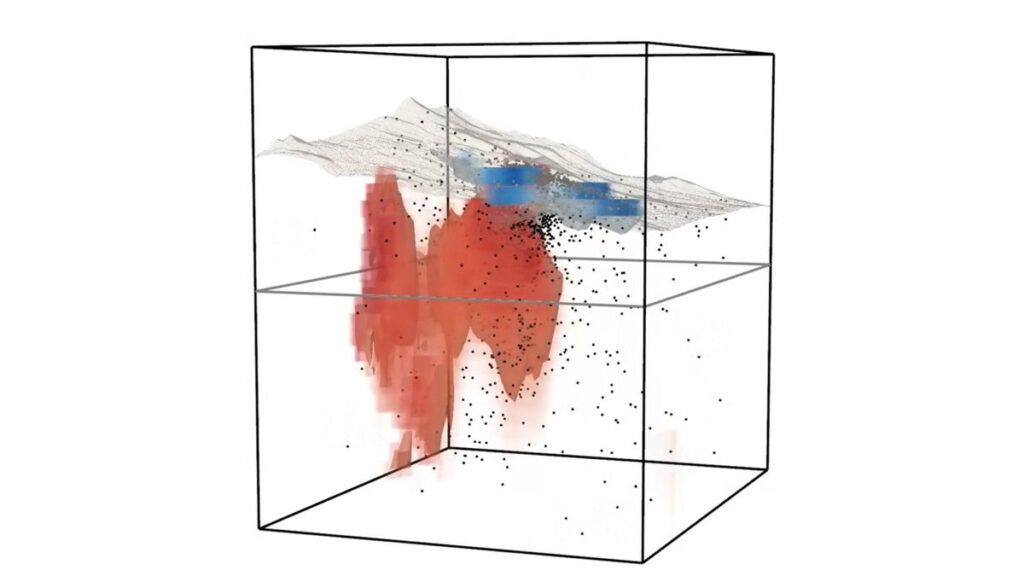A Groundbreaking Look Inside a Newborn Volcano
In an unprecedented scientific achievement, researchers have constructed a detailed 3D internal map of the Tajogaite volcano on La Palma. This breakthrough, which will significantly aid in preventing future risks in volcanic zones, was made possible by analyzing a staggering 17,345 microearthquakes recorded after its eruption ended.
An unprecedented scientific opportunity
This month, the journal ‘Geophysical Research Letter’ published a study led by Italy’s National Institute of Geophysics and Volcanology (INGV) and the Canary Islands Volcanology Institute (Involcan). The research focuses on the internal structures of the volcano that began emerging in the Aridane Valley on September 19, 2021. “It was a unique opportunity to observe a newborn volcano when its internal structures were still incandescent and active,” explained Luca D’Auria, Director of Volcanic Surveillance at Involcan, in a statement released by the INGV.
Mapping the depths with seismic tomography
The study used seismic tomography techniques applied to the earthquakes recorded in the days following the eruption. A network of 17 temporary seismic stations installed around the volcanic cone immediately after the event recorded thousands of microquakes over nine months. These tiny tremors were generated by thermal contraction and the movement of gases released from the cooling magma. “Thanks to artificial intelligence, we were able to analyze more than 17,000 microearthquakes, automatically distinguishing the useful seismic waves,” the researchers highlighted. This data made it possible to reconstruct a three-dimensional image of the first 1,500 meters beneath the volcano.
Revealing the volcano’s hidden fluids
By analyzing the speed patterns of different seismic waves and their relationships, the team gained valuable insights. These measurements are excellent indicators of temperature and the presence of fluids. The results show that in shallow zones, the analyzed ratio is low, indicating porous rocks saturated with gas or steam. At greater depths, however, the value increases, pointing to the presence of liquid fluids. “This variation tells us how pressure affects the state of fluids inside the volcano: at depth they remain liquid, while higher up they turn to gas,” explained Sergio Gammaldi, a researcher from the INGV’s Vesuvius Observatory.
Identifying the main magma conduit
The research also succeeded in identifying the volcano’s main magma conduit—the fracture through which lava and gas ascended during the Tajogaite eruption. The resulting image of the volcano’s inner workings covers a volume of 15.62 km³ (equivalent to a cube with 2.5-kilometer sides) and is the first ever obtained of a recently formed monogenetic volcano.
A vital tool for future risk prevention
The findings highlight the rapid development of a hydrothermal system with underground water and gas in a young volcano. This provides invaluable information for predicting and monitoring future eruptions, not just on La Palma but in other areas with similar volcanic activity. “Studying a newborn volcano from the inside is not only a scientific challenge: it also means increasing our ability to prevent risks in areas inhabited by millions of people,” concludes D’Auria.


